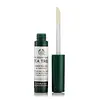What's inside
What's inside
 Key Ingredients
Key Ingredients

 Benefits
Benefits

 Concerns
Concerns

 Ingredients Side-by-side
Ingredients Side-by-side

Water
Skin ConditioningCaprylic/Capric Triglyceride
MaskingGlyceryl Stearate Se
EmulsifyingStearic Acid
CleansingCetearyl Alcohol
EmollientColloidal Sulfur
AntimicrobialGlycerin
HumectantSuccinic Acid
BufferingHydroxyethyl Acrylate/Sodium Acryloyldimethyl Taurate Copolymer
Emulsion StabilisingSalicylic Acid
MaskingPhenoxyethanol
PreservativeSqualane
EmollientBenzyl Alcohol
PerfumingSodium Hyaluronate
HumectantPolysorbate 60
EmulsifyingEthylhexylglycerin
Skin ConditioningSodium Hydroxide
BufferingDehydroacetic Acid
PreservativeMalachite Extract
AntioxidantSorbitan Isostearate
EmulsifyingTrisodium Ethylenediamine Disuccinate
CI 75810
Cosmetic ColorantWater, Caprylic/Capric Triglyceride, Glyceryl Stearate Se, Stearic Acid, Cetearyl Alcohol, Colloidal Sulfur, Glycerin, Succinic Acid, Hydroxyethyl Acrylate/Sodium Acryloyldimethyl Taurate Copolymer, Salicylic Acid, Phenoxyethanol, Squalane, Benzyl Alcohol, Sodium Hyaluronate, Polysorbate 60, Ethylhexylglycerin, Sodium Hydroxide, Dehydroacetic Acid, Malachite Extract, Sorbitan Isostearate, Trisodium Ethylenediamine Disuccinate, CI 75810
Water
Skin ConditioningAlcohol Denat.
AntimicrobialGlycerin
HumectantPEG-60 Hydrogenated Castor Oil
EmulsifyingMelaleuca Alternifolia Leaf Oil
AntioxidantSalix Alba Bark Extract
AstringentCalophyllum Inophyllum Seed Oil
AntimicrobialCarbomer
Emulsion StabilisingAminomethyl Propanol
BufferingLeptospermum Petersonii Oil
MaskingCitral
PerfumingLimonene
PerfumingCitronellol
PerfumingLinalool
PerfumingDenatonium Benzoate
MaskingTocopherol
Antioxidant
 Reviews
Reviews

Ingredients Explained
These ingredients are found in both products.
Ingredients higher up in an ingredient list are typically present in a larger amount.
Glycerin is already naturally found in your skin. It helps moisturize and protect your skin.
A study from 2016 found glycerin to be more effective as a humectant than AHAs and hyaluronic acid.
As a humectant, it helps the skin stay hydrated by pulling moisture to your skin. The low molecular weight of glycerin allows it to pull moisture into the deeper layers of your skin.
Hydrated skin improves your skin barrier; Your skin barrier helps protect against irritants and bacteria.
Glycerin has also been found to have antimicrobial and antiviral properties. Due to these properties, glycerin is often used in wound and burn treatments.
In cosmetics, glycerin is usually derived from plants such as soybean or palm. However, it can also be sourced from animals, such as tallow or animal fat.
This ingredient is organic, colorless, odorless, and non-toxic.
Glycerin is the name for this ingredient in American English. British English uses Glycerol/Glycerine.
Learn more about GlycerinWater. It's the most common cosmetic ingredient of all. You'll usually see it at the top of ingredient lists, meaning that it makes up the largest part of the product.
So why is it so popular? Water most often acts as a solvent - this means that it helps dissolve other ingredients into the formulation.
You'll also recognize water as that liquid we all need to stay alive. If you see this, drink a glass of water. Stay hydrated!
Learn more about Water